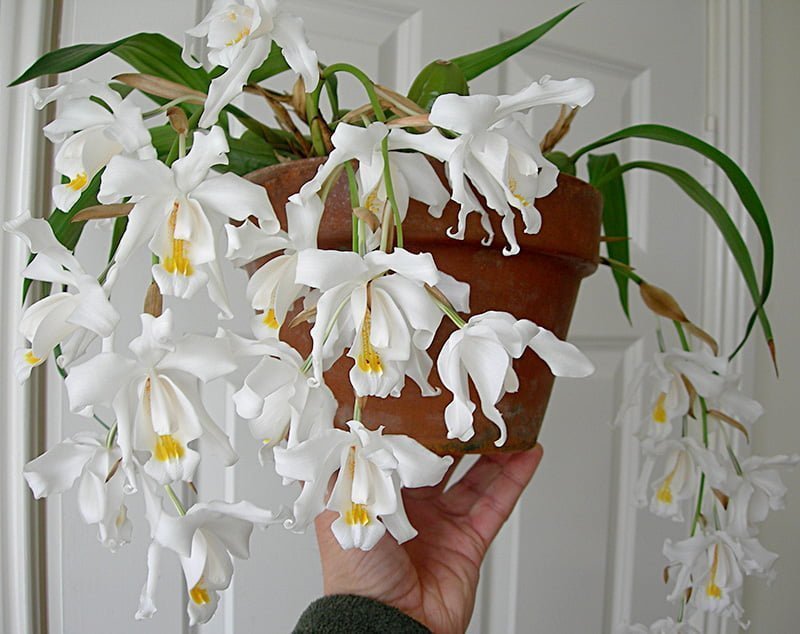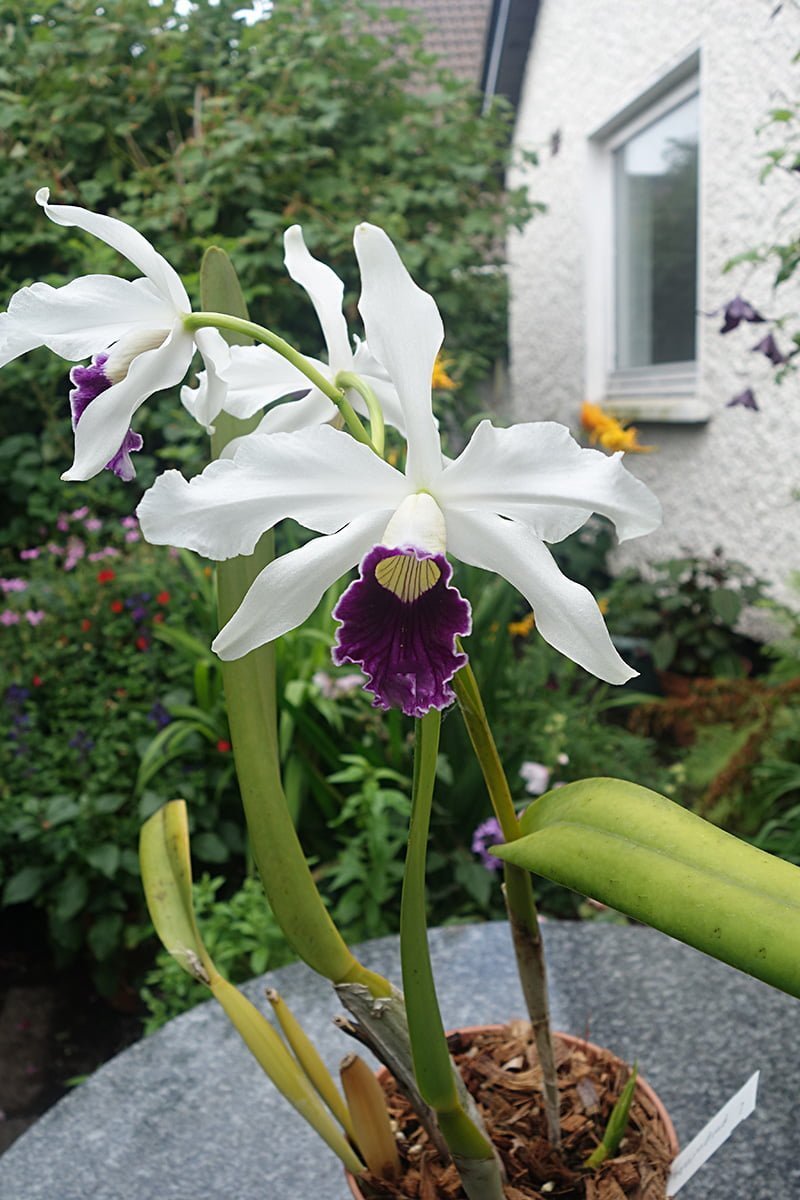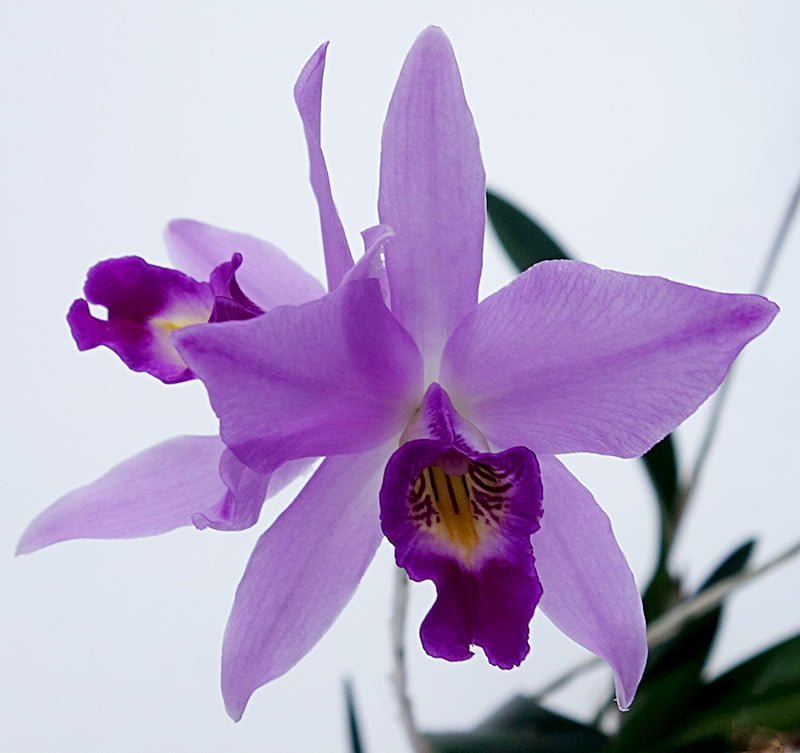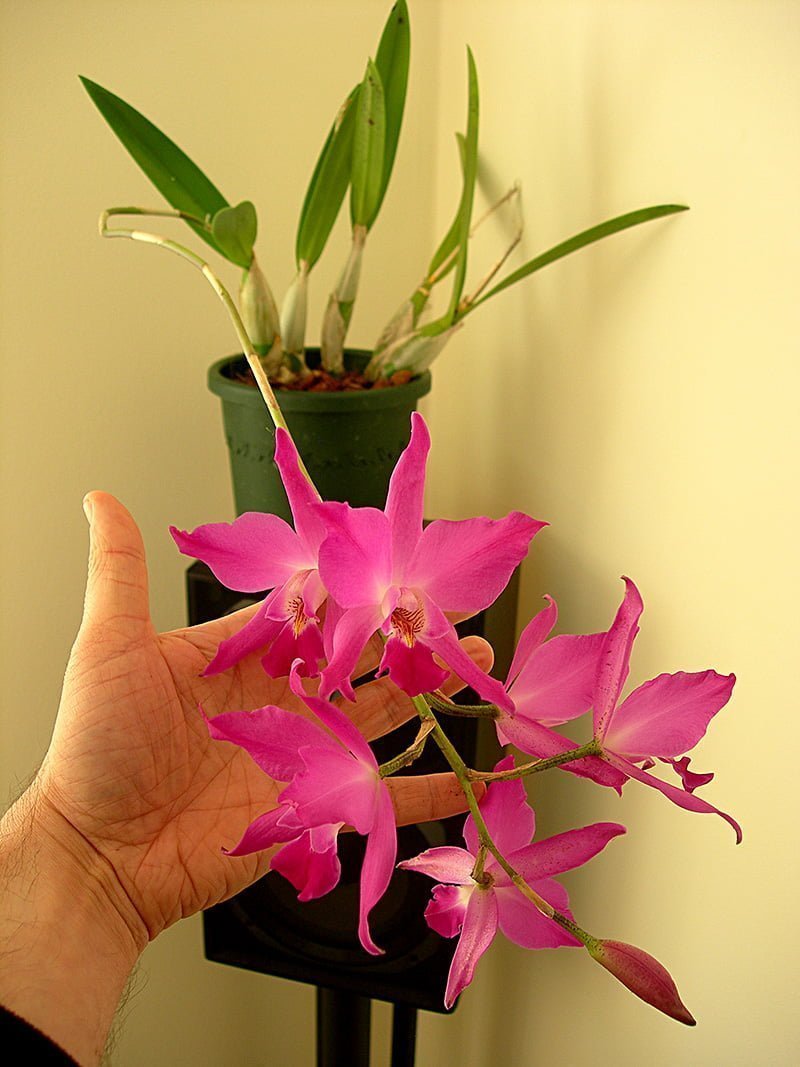By Shane Kerr (Irish Orchid Society member)
After 34 years of growing a diverse range of orchids I calculated that my failure rate was about 70%! However I also realised that I now know the causes of the majority of the losses but also factors which have led to the gratifying success with remaining 30%. The 10 secrets discussed here are not intended as laws to obey but rather I hope will be food-for-thought.

1. Less is More!
Orchid hobbyists often collect obsessively. However it is vital for the health of you and your plants that you keep your collection at a manageable size and the result will be less stress, mess, cost and disease transmission. You will recognise your limits when it starts being more like a chore than an enjoyable indulgence.
Tip: Dump any badly deteriorated plants you have had for a long time as it is unlikely they will recover.
2. Recognise your Growing Environment Limitations
Everyone could grow most tropical orchids to perfection if they could provide the optimal temperature, light intensity and humidity for their plants. It was the legendary Victorian Jean Linden (1817-1898) who first conveniently classified orchid types as cool, intermediate or warm growing.
Your growing environment temperature range should the major consideration in your plant selection. For example in my experience keeping intermediate or warm growers in a room unheated during the winter daytime will overtime affect plant health despite giving evening warmth.
Given these same conditions most cool types will persevere but interestingly I have found some exotic intermediate growers such as Laelia’s purpurata and gouldiana are temperature tolerant.

If you can provide at least some daytime winter heating in your home the intermediate and warmer growers will fare much better.
To see some tropical orchids grown to perfection by children in Britain check out the Writhlington School Orchid Project.
3. Fertilisers
Orchid specialist fertilisers such as “Rain Mix” (produced by Akerne Orchids), “Chempak” and “Orchid Focus” are popular and most contain nitrates in a form that is absorbable by orchids whereas most non-specialist fertilisers such as “All Purpose Miracle Grow” contain mostly ureic nitrogen which is claimed unusable by orchids.
Personally after trying them all I find little difference in growth between them and have read that the urea issue is controversial. Of the specialist fertilisers I find Rain Mix and Chempak are the best value.
4. The Importance of Autumn Watering and Feeding
New orchid pseudobulbs typically don’t develop until late in the season and when they do, they can swell fully in as little as a week. So growers should resist the inclination to reduce watering and feeding with the shorter days until the pseudobulbs are fully mature which is usually by the end of October.
Ideally rain, distilled or filtered water should be used and avoid “hard” tap water which is the type which causes lime scale on kettles etc. So check your water source quality.
5. Potting Media
Most orchid hobbyists today use Douglas fir bark for growing their epiphytic orchids and I have used it for 23 years. It is variable in quality and not usually sterile containing a myriad of bacteria and fungi which could affect your plant health and when disposed of could potentially be a source of disease to native trees etc.
Tentatively, I switched to Coir Husk Chips 11 years ago. It is unquestionably superior to tree bark being relatively sterile, clean to handle, lasting longer and supplied as dry blocks it will stores for years and is ecologically sustainable.
Different sized chips are available to suit particular orchids. The only downside is that obtained as dried blocks it requires breaking up before use and is being heavy is costly to import although some Irish Hydroponic shops stock it. Do not confuse this Coir with the lower grade type sold in garden centres for use as mulch.
Suggestion: The Orchid Society could organise bulk shipments of Coir for members.
6. Hygiene
Any Primary school teacher will tell you that a large class packed into a room is a recipe for disease transmission from colds to head lice! Orchid collections too are typically densely packed in a confined space which is not akin to the situation in their natural habitat. Every new orchid can be a potential source of disease particularly virus so it is important to be aware and take the recommended precautions below.
- Always sterilise cutting blades used for dividing, cutting flowers or trimming roots. Sterilisation can be achieved by simply placing the blade over a candle for a few seconds.
- Always sterilise previously used pots. This can be easily achieved for plastic pots by simply washing them and immersing in a bucket of bleach diluted 1:10 in water and left for 1 hour and then rinsed and dried.
- Never re-pot with bark previously used for another orchid.
- Re-potting: wash hands between each plant.
- Avoid splashing water over leaves from one plant to another or allowing water to run through one plant onto another below unless you are satisfied that your plants are disease free. New plants should be treated with caution for a few months until you confirm they are healthy.
- Minimise physical contact between plants.
- Bug pests can physically damage and carry diseases between plants. So wash off aphids and red spider mites by frequently using soapy water and in the case of Mealy bugs apply 70% Isopropanol using a small artist’s paint brush to their white waxy bodies. However you will have to regularly check and repeat for new infesting generations.
- Open cutting “wounds” can be dusted with culinary Cinnamon to prevent rot.
7. Orchid Buying Tips
When attending orchid fairs if you are interested in a plant unfamiliar ask an experienced grower before purchasing. I would also recommend buying large mature plants in preference to smaller immature “bargain” ones which might be offered as alternatives which invariably prove difficult to grow on successfully without winter grow lamps etc.
If a number of plants are available of a type you are interested take the specimen with the most pseudobulbs not the most flowers. It should give you confidence if the orchid you selected is an awarded cultivar which will be recognised by “FCC, AM or HCC abbreviations on its name label.
Buying online is now the usual method of obtaining orchids and today there are a plethora of web shops to ogle through particularly located in Germany and Belgium. In my experience they are all of similar standard but nothing beats seeing what you buy at a fair. And do not be tempted to buy outside the EU as there are severe import implications.
Buying online through “eBay” is more risky than from web shops in terms of plant quality as you do not know the plant’s history. For example the seller may have an old collection and unwittingly may have infected your plant with a disease.
8. Know the Easy Orchids
“Easy” orchids are those that are temperature tolerant, robust to environmental changes and blossom reliably under most people’s growing conditions. It is difficult to generalise but in my experience with a cold (unheated greenhouse) for summer growing and indoor cold day but warm evenings in winter the following examples have thrived for many years.
Cool growing Coelogynes, Laelia’s gouldiana, anceps and purpurata. Pleiones, particularly the hybrids, have proven to be the easiest of all orchids for me. I have also found that native Mexican orchids do better in our climate than the true tropicals.

You should recognise success with an orchid when it increases the size and /or the number of pseudobulbs with each year and if this is achieved over 3 successive years you can have confidence this is an orchid that works for you for the future.

9. Know the Bad Reputation Orchids
For me “difficult” orchids are those which have repeatedly proved unsustainable despite obtaining plants from different sources and which on research have been described as temperamental by other growers. The ones which I refer include the commercially ubiquitous Burrageara “Nelly Isler” and others that readily succumb to unsightly fungal leaf spotting such as Zygopetalums, Lycastes and Brassias. Masdevallias are notorious for rapid collapse and death typically if the temperatures are too high or humidity too low.
Then there are the ones that simply refuse to grow like some Pleione species unless carefully cooled during dormancy. I am not a big fan of many Dendrobiums as although easy to grow they do not readily flower abundantly as they require subtle temperature changes to trigger bud formation. And it should be remembered that some “cool” growers aren’t necessarily easy including Odontoglossums particularly the enchanting, rare and choice Odontoglossum crispum.
It is an unending source of interest and envy when I hear hobbyists who have contradictory growing experiences to me with these same plants and that is surely an opportunity to learn and the benefit of being in a society to discuss.
10. Educate Yourself!
Unlike when I began growing orchids in 184 when there were only a few orchid reference books around, today there is a multitude of information sources on all aspects of cultivation. “YouTube” channels I subscribe to include “Gardening at Douentza” which is Irish and the goldmine that is “MissOrchidGirl”. I also often visit the Swedish grower blog website “OrchidKarma.com” and finally of course all orchid growers should be aware of the websites “orchidmall.com” and “orchidspecies.com” which are hubs for everything orchid related.

Very helpful and interesting Shane
Laelia gouliana is wonderful! I want it too.
Thanks! Interesting and useful!Interesting and useful!